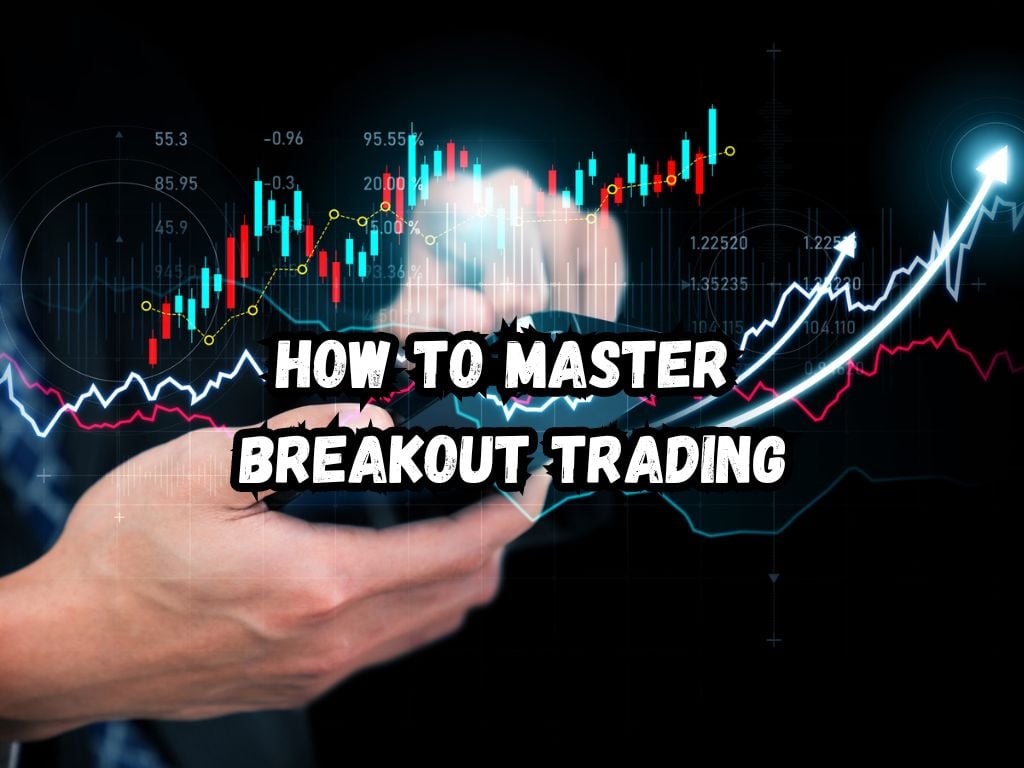In the vibrant world of financial markets, breakout trading stands as a pivotal strategy for many successful traders. The allure of breakout trading lies in its simplicity and potential for significant gains.
This guide aims to help you master breakout trading, providing traders at all levels with the knowledge to enhance their trading prowess.
Understanding the Basics: What is Breakout Trading?
Breakout trading involves identifying and entering a trade when the price of a security moves beyond a defined support or resistance level with increased volume.
These levels are pivotal as they signify the potential start of a new trend. Breakout traders capitalize on this momentum, aiming for profits as the trend evolves.
The distinction between breakouts and fakeouts is crucial. A breakout signals the start of a new market trend, while a fakeout is a false alarm, tricking traders into believing a new trend is starting when it isn’t.

How to Master Breakout Trading
To master breakout trading, recognizing the right opportunities is key. Analyzing trends and chart patterns forms the basis of identifying potential breakouts.
Support and resistance levels further guide traders in spotting these chances. The significance of volume cannot be overstated; it serves as a confirmation of the breakout, signifying the strength behind the move.
Preparing for the Trade
Successful breakout trading begins with preparation. Understanding the market conditions that favor breakout trades enables traders to position themselves advantageously.
Setting concise stop losses and profit targets is part of this preparation, ensuring that traders maintain control over their risk and potential rewards.
Criteria for a Successful Breakout Trade
A successful breakout trade is not just about the right entry; it’s also about understanding the tools at your disposal.
Technical indicators play a significant role in identifying potential trades. Furthermore, considering timeframes is essential as the significance of a breakout can vary across different periods.
Entry and Exit Strategies for Breakout Trading
Timing is everything in breakout trading. Entering a trade at the right moment can significantly increase the chances of success.
Equally important is knowing when to exit. Successful traders have a clear plan for managing their positions, recognizing when it’s time to take profits or cut losses.
Tools and Platforms for Breakout Traders
The choice of trading platforms and software can significantly affect a trader’s success. Platforms that offer real-time data, robust charting tools, and customizable alerts empower traders to act swiftly on breakout opportunities.
Risk Management in Breakout Trading
Even with the best strategies, breakout trading involves risks. Effective risk management techniques such as careful position sizing and portfolio management are essential. These practices help traders minimize losses and protect their investment capital.
Advanced Techniques and Pro Tips
For those looking to elevate their breakout trading, considering multiple time frame analysis can provide a more comprehensive view of potential trades.
Combining breakout trading with other strategies also enhances a trader’s ability to navigate different market conditions.
Common Pitfalls and How to Avoid Them
Overtrading and emotional decision-making can undermine the success of breakout trading. Recognizing and addressing these challenges is crucial.
Similarly, learning to deal with false breakouts by incorporating confirmation signals into your strategy can improve trade accuracy.

Case Studies and Historical Examples
Case studies of successful breakout trades highlight factors such as high volume, strong support or resistance level breaches, and fundamental catalysts aligning with technical indicators, which contribute to the credibility of the breakout.
Conversely, examining failed breakouts where traders anticipated a move that didn’t materialize can illustrate the importance of confirming signals and avoiding false breakouts. Examples include breakouts with low volume or those that occur due to market noise rather than substantial reasons.
Historical examples provide a retrospective to discern patterns, reinforce best practices in breakout trading, and help traders devise strategies to mitigate risks while capitalizing on potential gains.
Frequently Asked Questions
What is the best timeframe for breakout trading?
The effectiveness of breakout trading can vary across different timeframes. Short-term traders often focus on shorter intervals, while long-term traders may look at daily or weekly charts.
How do you confirm a true breakout?
Confirming a true breakout often involves looking at volume. A significant increase in volume suggests a strong move and supports the breakout’s validity.
What are the most reliable chart patterns for breakout trading?
Patterns like triangles, flags, and head and shoulders are among the most reliable for breakout trading, each offering clear entry and exit points.
How much capital do you need to start breakout trading?
The capital required can vary based on individual strategy and risk tolerance. However, starting with a smaller amount and gradually increasing as you gain confidence is a prudent approach.
By embracing the strategies laid out in this guide, traders can enhance their understanding and execution of breakout trading, setting the stage for more informed and potentially profitable trading decisions.
Conclusion
Mastering breakout trading requires understanding its principles, crafting a solid strategy, and continuously refining your approach based on experience and market changes.
By adhering to this guide, traders can navigate the complexities of breakout trading with greater confidence and precision.


 Tags:
Tags:










